As the HVAC industry evolves further in response to new market opportunities, sustainability initiatives and changing consumer demands it’s easy to be left at a loss of how to cut through the marketing speak and deliver benefit-driven information to your customers. Putting in the extra work to fully understand how to translate product features into Read more
Guest Blog

As the HVAC industry evolves further in response to new market opportunities, sustainability initiatives and changing consumer demands it’s easy to be left at a loss of how to cut through the marketing speak and deliver benefit-driven information to your customers. Putting in the extra work to fully understand how to translate product features into real-world customer benefits will give you an edge in the market. Below is a discussion on how to navigate an industry of new and old considerations across customer demographics. Follow along to understand how you can shift your strategies to build customer relationships through simple communication training of your sales staff.
Define your competitive edge through no-nonsense delivery
Is it just me, or does every HVAC product on the market have the same features?
Tell me if you’ve heard this one before: “Our new, highly-efficient product provides homeowners with a simple, flexible, and cost-competitive solution.”
Does this sound like a product line you offer? Truth be told, this description could apply to any number of products. For example, a system that offers “zoning” could be anything from a sophisticated ductless system to a simple air conditioner with manual air dampers.
Here’s the problem: today’s customers are the most educated customer base we’ve ever experienced. With access to information at our literal fingertips in our smartphones, customers can fact-check a sales pitch in an instant. HVAC repair and replacement is an expensive investment for most customers to begin with, so it’s understood that they want to know exactly what they’re paying for.
If you state that a product is efficient, customers want to know: How efficient and what are the benefits? Compared to what? Does it cost more, if so, what’s the price difference? Do I really need it?
If you’re not being clear with your customers, you can trust that they are getting their information elsewhere — perhaps even pulling purchase decision information from your competition.
There are simple improvements to your sales information delivery that can help to move past the jargon and build meaningful conversations with your customers that leave them feeling well-informed and satisfied in their decision. In short, you can build credibility – and become the authority – by being honest and transparent.
As mentioned, using vague terms to describe a product as efficient, variable, or flexible tells the customer very little. The way to fix this is to always speak in terms of comparison. By speaking in comparisons, you will educate the customer on all of the options available to them – not just the one you’d like to sell. This is a critical step in achieving value in customer satisfaction.
If you’re not comfortable speaking in comparison, here are three ways to help get you started:
- Stop talking features & benefits and start talking sell points and personas
If you’re speaking to a customer about a solution they are just one step away in the sales funnel from making a purchase. It’s important at this stage that you carefully consider what you say and how you say it.
Consider this: most brochures you’ll hand a customer have a long list of features & benefits… those features are often phrased in comparison to an older version of that same product or directly to a competitor’s product – “Even quieter!” or “More flexible than ever!”
But the homeowner doesn’t care if it’s “even quieter” than a previous generation of a product that isn’t in the consideration set they are making for their home. Focus on the information your homeowner actually wants and needs: what options do you recommend; what specifically makes you recommend these based on my needs; how much does it cost?
Hone in on information by defining the sell points for all the products in your portfolio. An easy way to do this is to determine the five whys for each of your products:
- Who would most want or need to purchase this product?
- What type of situation is this product most suitable for?
- Why would they need this product?
- When can we promise to deliver this product to the customer?
- Where are most of the customers geographically located who need this product?
Notice the emphasis on the extremes in these questions. The goal is not to answer in general – “who could use or purchase this product” – but rather “who MOST wants or needs this product and why.” This is critical to defining the true selling points of a product.
By taking this approach, your team will be able clearly to describe the important reasons behind a recommendation because they have clear guidance as to why to recommend it in the first place. You might even consider building a questionnaire that will help both you and your customer come to a decision on the right choice for them.
- Group your product offerings using tiers
Instead of confusing customers with an onslaught of product brochures covered in brand names, shiny logos, and pretty pictures, consider packaging your products into tiers. Most homeowners are able to easily pick up the concept of Good, Better, and Best – or Bronze, Silver, and Gold.
By grouping your offering into rungs on a ladder, you’re giving the customer a baseline to compare products against one another. The key to this approach is to ensure your groupings offer key differences. Perhaps package A is best for the cost-conservative homeowner, package B is best for the energy-conscious customer, while package C is most suitable to the customer seeking a quick turnaround.
With this system, customers can easily determine the difference between your products and make informed decisions on which products best fit their needs.
-
Give three options whenever possible
When ordering drinks at your local coffee shop, why is it so many of us opt for the medium size? A small seems too small, and a large seems, well…too large. When we are given three options, often we are seeking the Goldilocks “just right” feeling.
No one wants to miss out on an upsell, but the goal should not be to dupe your customer into buying the highest-margin product by failing to tell them about a more cost-effective option that likely checks off the needs on their list. Provide customers with three options: something that doesn’t quite meet their needs, something that over-delivers, and a solution that falls in the middle. Because you have tuned in to exactly what the customer needs, selling the middle option in comparison to the other two should be simple.
If you are the service provider for all three options, this strategy gives you an added bonus. If the customer chooses the more elaborate option, you’ve earned more. If they choose the less desirable option, they will know up front what they’re getting and perhaps sacrificing – and you’ve earned their trust in the process.
What does this sound like?
The common – although tired – sales pitch I shared at the beginning turns into a richer conversation once you’ve added comparisons. In this example, I’ve uncovered that the customer is most concerned with the ability to stay comfortable in their home, with affordability being their second concern.
“The package I’d like to offer you today is our Premier package. Your upstairs and downstairs will have individual thermostats, which I know is what you were looking for. I’d like to share with you some other options for your consideration. Our Platinum package would give you even more comfort options: every room could have its own set point. The higher price could be offset with some rebates, but it is more expensive than the Premier package. Another option is our Economy package. This is the most affordable of the three, but it doesn’t come with the zoning you asked for. Given what we have discussed so far, I think the Premier package most meets your needs.”
By defining the sell points for your products, grouping them into tiers, and offering at least three options you can successfully provide the customer with a well-thought-out and easily understandable reasoning for your recommendation.
Resolve to make comparison-speak a habit in your organization and your customers will see you as a more trustworthy source of information for their buying decision process.

Pam Duffy, P.E. is the Owner of Spark One Solutions, LLC based in Dallas, TX – a marketing and business solutions consulting company based serving HVAC businesses.
She serves as a member of the AHR Expo Expert Council – a collaboration of HVACR experts and thought leaders launched by the AHR Expo in 2019 to educate and stimulate discussion concerning the biggest issues impacting the industry.
She has a mechanical engineering degree from the University of Central Florida and is a licensed PE. She has 10 years of experience in the HVAC industry and is most well-known for bringing new HVAC products to life.
Pam will be speaking more in-depth on this topic at AHR Expo 2020, and it will be a free session with attendee registration. Register HERE.
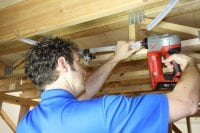
Residential plumbing and HVAC installers take note: you can pipe an entire home with the durability, flexibility and cost-effectiveness of PEX — for plumbing, fire sprinkler systems and radiant floor heating. Here’s how… PEX plumbing With more new homes plumbed with PEX than copper and CPVC combined, you’re probably already aware of the benefits of Read more
Residential plumbing and HVAC installers take note: you can pipe an entire home with the durability, flexibility and cost-effectiveness of PEX — for plumbing, fire sprinkler systems and radiant floor heating.
Here’s how…
PEX plumbing
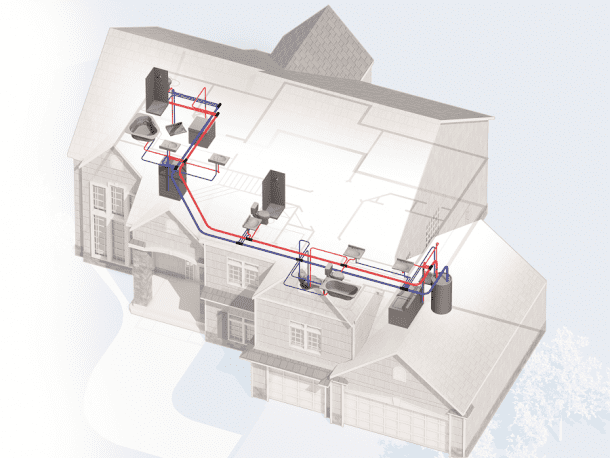 With more new homes plumbed with PEX than copper and CPVC combined, you’re probably already aware of the benefits of plumbing with PEX. However, you may not know about a newer, smarter way to install a PEX plumbing system that goes in faster, uses less materials, requires fewer connections and minimizes your liability.
With more new homes plumbed with PEX than copper and CPVC combined, you’re probably already aware of the benefits of plumbing with PEX. However, you may not know about a newer, smarter way to install a PEX plumbing system that goes in faster, uses less materials, requires fewer connections and minimizes your liability.
This innovative design is called Logic plumbing.
The Logic approach uses the flexibility of PEX pipe to minimize connections and reduce potential leak points while also incorporating multiport tees located near fixture groupings to limit the amount of pipe and connections needed.
What’s a multiport tee, you ask? It’s essentially a bunch of tees all molded together to create one long tee with multiple outlets. This design greatly reduces the number of fittings and connections needed to plumb a home (think: reduced materials cost and labor time).
 Here’s an example of how a multiport tee saves installation time and materials: a flow-through multiport tee with six outlets has eight connections (six connections for the ports, a main flow-through inlet and a main flow-through outlet). Six regular tees, on the other hand, have a whopping 18 connections. That’s an increase of more than double the connections — and double the installation time.
Here’s an example of how a multiport tee saves installation time and materials: a flow-through multiport tee with six outlets has eight connections (six connections for the ports, a main flow-through inlet and a main flow-through outlet). Six regular tees, on the other hand, have a whopping 18 connections. That’s an increase of more than double the connections — and double the installation time.
Best of all, multiport tees are not considered manifolds, so they can be installed behind walls without the need for an access panel. Double win, there!
For a Logic layout, a main line connects to a multiport tee with distribution lines going out from the multiport to provide water to all fixtures in a single or adjacent grouping. This design uses significantly less pipe than a home-run layout, with just a few more connections. Plus, it requires considerably fewer connections compared to a trunk-and-branch installation.
For example, a 2,300-square-foot, two-story home using a Logic design requires only 637 feet of pipe while a home-run system uses 1,515 feet of pipe. And, while it’s true a Logic installation uses slightly more connections than a home-run layout (59 vs. 48 in the 2,300-square-foot, two-story home example), the amount of pipe savings is significantly more beneficial with the labor and material savings you get with less pipe to install.
A Logic layout also installs much faster compared to a trunk-and-branch system due to the vast reduction in connections. With the two-story home example, a Logic layout uses a mere 16 fittings and 59 connections compared to a whopping 96 fittings and 165 connections for trunk and branch.
PEX multipurpose fire sprinkler systems
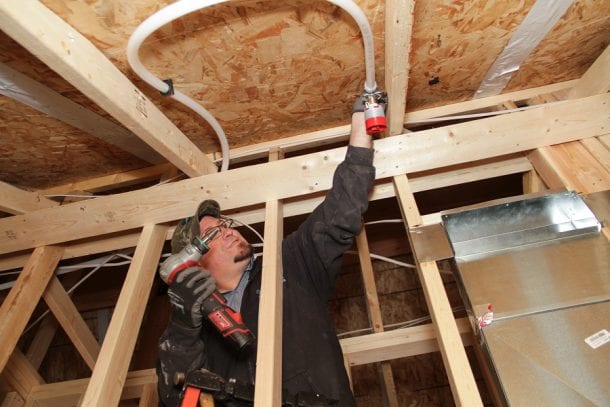 If you’re a licensed plumber who wants to add an additional service to your offering, check out PEX multipurpose fire sprinkler systems. These systems combine the fire sprinklers with a home’s cold-water plumbing. It’s genius!
If you’re a licensed plumber who wants to add an additional service to your offering, check out PEX multipurpose fire sprinkler systems. These systems combine the fire sprinklers with a home’s cold-water plumbing. It’s genius!
Installation is remarkably easy — the sprinkler is essentially just another fixture to tie into the plumbing line. For most contractors who already install PEX plumbing systems and have the tools, knowledge and, most importantly, the relationships with the home builders, this is a slam dunk.
Depending on the jurisdiction, multipurpose systems typically don’t need check valves or backflow preventers, and because they combine with the potable plumbing, they don’t use antifreeze, so all those added costs are eliminated.
To get started in most jurisdictions, licensed plumbers just need the appropriate training and a quality design that meets the NFPA 13D standard requirements for home fire sprinkler systems.
If you’re interested in learning more, email me at kim.bliss@uponor.com, and I can get you all the information you need to add this profitable new service to your business.
PEX hydronic radiant floor heating
There’s nothing like the comfort of radiant floor heating — ask anyone who has experienced it. And, homeowners will pay nicely for a quality radiant floor heating system, so there is definitely income potential if you can learn to do it right.
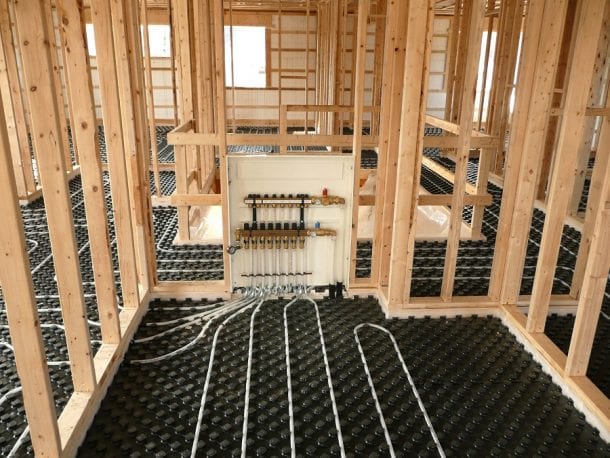 That said, with radiant floor heating, there’s a little more to learn. But, like fire sprinkler systems, starting with a proper design is key. If your design is wrong in the beginning, there’s not much you can do to fix the system once it’s installed.
That said, with radiant floor heating, there’s a little more to learn. But, like fire sprinkler systems, starting with a proper design is key. If your design is wrong in the beginning, there’s not much you can do to fix the system once it’s installed.
Take advantage of the radiant design services many PEX manufacturers offer to guide you through the process. There are several design factors to know, including floor R-values, heat-loss calculations, pipe sizing, loop lengths, pump sizing, manifold types and more.
Once you learn the basics of radiant design and get a few small jobs under your belt, you have the potential to take your expertise to the next level with bigger, more profitable projects. But again, be sure to get the proper design and training before you tackle a radiant project. It will be well worth it in the long run.
To get a jumpstart on all things radiant, visit the following industry websites at radiantprofessionalsalliance.org, healthyheating.com or heatinghelp.com.

Kim Bliss is the content development manager at Uponor. She can be reached at kim.bliss@uponor.com.
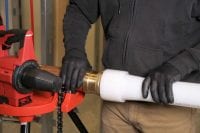
Two piping systems that are taking the domestic-water and hydronic heating and cooling landscape to a new level. These innovative solutions are providing the construction industry with systems that are easier to learn (to help with the skilled-labor shortage), faster to install (to meet tight construction schedules) and provide cleaner installation sites (for jobsite safety) Read more
Two piping systems that are taking the domestic-water and hydronic heating and cooling landscape to a new level. These innovative solutions are providing the construction industry with systems that are easier to learn (to help with the skilled-labor shortage), faster to install (to meet tight construction schedules) and provide cleaner installation sites (for jobsite safety).
 For PEX pipe, popularity is growing for risers, distribution piping and even direct-burial applications in sizes 3″ and down. Its flexibility, fast installations and stable pricing make it appealing for contractors, and its corrosion resistance and durability in freezing conditions make it highly attractive to building owners.
For PEX pipe, popularity is growing for risers, distribution piping and even direct-burial applications in sizes 3″ and down. Its flexibility, fast installations and stable pricing make it appealing for contractors, and its corrosion resistance and durability in freezing conditions make it highly attractive to building owners.
For copper press, contractors are enjoying a safer, flameless connection system that eliminates solder, heat and flux from the job site while offering contractors a metallic system that is faster and easier to learn and quicker to install.
Now, imagine combining the best of both worlds — PEX expansion and copper press — for quicker, easier training, faster installs and safer jobsites to get the job done right in less time.
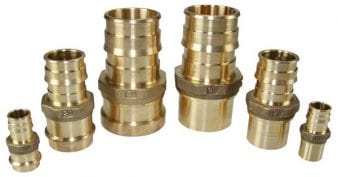 With the launch of the industry’s first ProPEX® expansion to copper press transitions, professionals now have a solution for a completely flameless piping system that eliminates the hassles, costs and hazards of soldering while also providing more efficient installs.
With the launch of the industry’s first ProPEX® expansion to copper press transitions, professionals now have a solution for a completely flameless piping system that eliminates the hassles, costs and hazards of soldering while also providing more efficient installs.
Watch how easy it is to make these transitions.
Manufactured from high-quality, lead-free brass to meet all local and national domestic-water building codes, the transitions are available in both male and female configurations with the female adapters featuring an EPDM rubber O-ring for a dependable seal.
Best of all, they feature a patented design for securely fastening the pipe and fitting together, eliminating the need for a stainless-steel ring commonly used in large-dimension copper press fittings.
Compared to soldering copper, these transitions reduce an overall project timeline by an average of 71%, helping to manage a project’s schedule and, ultimately, the bottom line. And because they are backed by a 25-year transferable limited warranty, the transitions offer additional confidence and peace of mind.
So if you’re like most construction professionals out there, feeling the crunch of the labor shortage but still want the quality of a professional piping system, look to a hybrid PEX expansion and copper press system. The end result can be money in the bank.
To learn more about the transitions, visit uponorpro.com/copperpress_us.

Kim Bliss is the content development manager at Uponor. She can be reached at kim.bliss@uponor.com.

The term “duct tape” is misleading in that it’s not just one kind of tape (and, ironically, the majority aren’t recommended for HVAC systems). The term generally applies to a classification of pressure-sensitive tapes constructed in three layers: polyethylene (plastic), scrim (mesh fabric) and rubberized adhesive. But the quality, thickness (measured in mils — 1 Read more
 The term “duct tape” is misleading in that it’s not just one kind of tape (and, ironically, the majority aren’t recommended for HVAC systems). The term generally applies to a classification of pressure-sensitive tapes constructed in three layers: polyethylene (plastic), scrim (mesh fabric) and rubberized adhesive. But the quality, thickness (measured in mils — 1 mil = 1/1,000 in.), adhesion level and tensile strength vary widely, as do the specific recommended uses for each sub-category. Knowing which tapes to grab for which jobs will ensure your fix doesn’t fail and can save you time, money and a lot of space in your toolbox. Here’s a rundown.
The term “duct tape” is misleading in that it’s not just one kind of tape (and, ironically, the majority aren’t recommended for HVAC systems). The term generally applies to a classification of pressure-sensitive tapes constructed in three layers: polyethylene (plastic), scrim (mesh fabric) and rubberized adhesive. But the quality, thickness (measured in mils — 1 mil = 1/1,000 in.), adhesion level and tensile strength vary widely, as do the specific recommended uses for each sub-category. Knowing which tapes to grab for which jobs will ensure your fix doesn’t fail and can save you time, money and a lot of space in your toolbox. Here’s a rundown.
General Purpose Duct Tapes
Typical Thickness: 6-9 mils
This category covers a range of duct tapes, from the DIY junk-drawer tool for everyday household repairs to pro grade duct tapes that offer slightly thicker polyethylene, stronger adhesive qualities and, in some cases, waterproof backing. General purpose utility tapes have excellent bang for your buck and offer basic performance levels for jobs around the house (like sealing boxes, patching a grill cover or mending a plastic garden tool) or light duty pro applications in which an abundance of tape will be used and discarded in a short time (like hanging poly-sheeting or moisture barriers and bundling jobsite materials to be scrapped). Manufactured in a wide array of colors, they can also come in handy for labeling and color-coding. Because these tapes generally aren’t designed to stick to rough surfaces or withstand extreme fluctuations in temperatures, they’re best in lower-demand applications when you need a lot of tape at a value price. Bottom line: Handy for DIY home projects or light duty patching and bundling for pros on the job site.
Heavy Duty Duct Tapes
Typical Thickness: 10-17 mils
Unlike general purpose tapes, heavy duty duct tapes are formulated with superior adhesive, extra-thick polyethylene and an interwoven fabric scrim that has high tensile strength—but they’re still easy enough to tear by hand, which makes them ideal for fast repairs on the job. They can adhere to a variety of rough (and in some cases dirty) surfaces like brick, concrete, metal, wood and vinyl siding without the corners peeling up. Many offer UV resistance so that sunlight won’t impact their performance over time, and they can stand up to extreme temperature ranges and weather conditions. These are aggressive, highly versatile tapes for on-the-job tasks like attaching plastic sheeting to exterior surfaces, securing power cables and other tripping hazards on dirty floors or bundling construction materials. As a bonus, they can save the day in unexpected worksite mishaps — mending a broken tool handle, sealing a cracked wet/dry vacuum cleaner hose, or even patching a hole in your work boot or a torn truck seat. Bottom line: Every tradesperson should keep at least one roll of heavy duty duct tape in the toolbox — and multiple widths or colors won’t hurt.
Clear Repair Tapes
Typical Thickness: Approx. 7 mils
Clear repair tapes are not technically duct tapes in construction, but they offer similar performance and application, so it’s natural to compare them. Plus, they’re valuable tools for pros. Designed primarily for non-porous surfaces like glass, fiberglass or plastic, these tapes have long-lasting, airtight holding power, are waterproof and UV-resistant and, most importantly, allow the surface underneath to show through. That makes them ideal for repairing cracked cell phones screens, skylights, windows, mirrors and headlights. Bottom line: Your go-to tape for airtight, waterproof repairs on any surface that needs to be seen.
Structural Grade Duct Tapes
Typical Thickness: Approx. 17 mils
This is a relatively new category in tape technology. Super-aggressive adhesion and extremely high tensile strength make tapes like this less a tool for mending and patching and rather a quick engineering solution. Structural grade duct tapes are for projects that require intense strength, durability and holding power: think hoisting a heavy tool bucket up scaffolding, towing heavy construction materials short distances, or strapping and securing a heavy tool or appliance for transport. Currently, only one product exists in this category—T-Rex® Brute Force™. One loop of it can hold more than 700 pounds (yes, 700), making it the strongest duct tape on the market. It’s so strong you can’t tear it by hand. For some jobs, it’s even strong enough to take the place of rope or chain (and a roll of Brute Force is significantly lighter and more compact). Bottom line: Job requires a rope or chain? Consider a roll of Brute Force instead.

Steven Wagner is an eight-year veteran of ShurTech® Brands, Wagner currently serves as Category Manager for T-REX® and DIY Tapes. He has played an integral role in the development of the T-Rex® tape brand and has spearheaded advancements in new and innovative tape solutions for the contractor and residential markets. Wagner holds a bachelor’s degree from Capital University and a master’s degree from the University of Akron.

Rinnai supports skilled trade gap by partnering with Folds of Honor The skilled trade industry is in desperate need of enthusiastic workers as the baby boomers are retiring. However, vocational school has become an obsolete term for high school students, the exact age employers are targeting the most.Skilled Trade Gap Baby boomers are beginning to Read more
Rinnai supports skilled trade gap by partnering with Folds of Honor
The skilled trade industry is in desperate need of enthusiastic workers as the baby boomers are retiring. However, vocational school has become an obsolete term for high school students, the exact age employers are targeting the most. Skilled Trade Gap
Skilled Trade Gap
Baby boomers are beginning to retire and recruiters are looking for new skilled trade workers to fill their shoes. What is the problem? There are not enough laborers equipped to fill them. With a push toward a four-year college degree, many generational skilled trade workers are leaving the family business, and only a few men and women are choosing trade career options.
Vocational school is soon left out of the conversation when teenagers are told that going to a four-year institution would provide them with a more reliable and better paying career. Even though vocational school is less expensive, provides students with a valuable skill, and most students are hired immediately into the workforce upon completion. Knowing these statistics, teenagers made the decision to go to college which created a large gap between themselves and the current baby boomers in the industry.
There are 31 million skilled trade positions needing to be filled, according to Adecco US. It is important to reopen the conversation and benefits of vocational school with high school students as well as introduce them to these ideas as soon as the word “college” is mentioned.
How Can We Help?
Rinnai is dedicated to helping close the skilled trade gap by encouraging more students to seek a vocational education. By partnering with Folds of Honor, a nonprofit organization started by Major Dan Rooney, Rinnai will be providing trade-specific educational scholarships to spouses and children of America’s fallen and disabled service members. For every Rinnai tankless water heater or boiler sold this year, Rinnai will make a contribution up to $250,000 to fund scholarships in the plumbing and HVAC trades. We hope our contribution will help to strengthen our industry for the current generation to provide skills for the future.
We encourage you to join Rinnai by honoring our service members’ sacrifice and educating their legacy, by donating to Folds of Honor, by visiting https://www.rinnai.us/FoldsOfHonor.
